Demon Slayer alters familiar shonen conventions into something uniquely brutal. Tanjiro's journey through the Taisho-era demon underworld illustrates how classic anime storytelling devices can be elevated through superior execution and genuine character development. The series demonstrates that well-worn tropes become powerful when filtered through authentic emotional stakes and detailed world-building.
1. The Tragic Family Destruction Opening
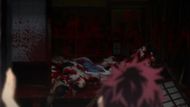
Demon Slayer skillfully utilizes classic shonen tropes to set Tanjiro Kamado on his path as a demon slayer, starting with the tragic bloodbath of his family at the hands of demons. This foundational cataclysm does fit as both the vibrant core and driving reason for Tanjiro's whole journey throughout the series. The cruel butchery of the Kamado family establishes the stakes directly.
2. The Sibling Bond That Defies Convention
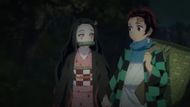
Tanjiro's relationship with his demon-turned sister, Nezuko, designates a striking twist on the protective sibling dynamic common in shonen anime. Tanjiro’s path isn’t driven by revenge or a quick fix; he chooses to stand by Nezuko in her demon form while working to return her to human life. This bond becomes the series's touchy-feely anchor.
3. The Reluctant Hero's Compassionate Nature
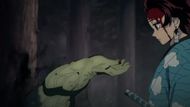
Unlike the bold heroes often found in shonen stories, Tanjiro represents the reluctant hero, defined by his deep compassion toward both humans and the very demons he battles. His tenderness extends even to his enemies, often showing mercy and understanding their tragic backstories before delivering final blows. This path to heroism in the series creates a more nuanced protagonist who fights not out of hatred but from a desire to protect others and end agony.
4. The Eccentric Mentor Figure

Sakonji Urokodaki fits totally into the wise mentor trope, conditioning Tanjiro in the ways of demon slaying while wearing his spooky fox mask. His quirky teaching methods and protective nature show him as both a father figure and a spiritual compass for our young hero. The mentor relationship in Demon Slayer accentuates patience, discipline, and emotional growth rather than just physical strength.
5. The Grueling Training Arc Transformation
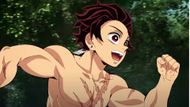
The mountain training arc illustrates one of shonen anime's most special segments: the extreme practice period that recasts wimps into combatants. Tanjiro’s hellish year of training includes slashing massive boulders, dodging lethal traps, and mastering breathing forms. It pushes his body and core far past normal human capacities. This training arc in the series acts as both character evolution and power scaling, laying the basis for all of Tanjiro's future battles and growth throughout the series.
6. The Power of Unbreakable camaraderie
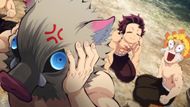
Predominantly featured in the shonen genre, the power of friendship trope lets characters transcend their limits and dominate their foes, and Demon Slayer signifies this via Tanjiro's bonds with Zenitsu and Inosuke. Their improbable trio explains how different characters can complement each other in battle, with each member protecting the others' shortcomings.
7. The Hidden Bloodline Legacy in Demon Slayer

Tanjiro's linkage to the legendary Sun Breathing technique shows the hidden bloodline trope that runs deep in shonen storytelling conventions. His family's secret knowledge of this powerful fighting style connects him to ancient history and the original wielder, Yoriichi. This disclosure in Demon Slayer adds layers of destiny and inherited duty to Tanjiro's expedition.
8. The Tournament-Style Demon Encounters
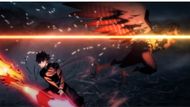
Each demon fight in Demon Slayer pursues a tournament-like structure where our heroes face increasingly powerful enemies with unique abilities and tragic backstories. From the Hand Demon to the Upper Moons, these encounters escalate in difficulty while exposing more about the demon hierarchy and Muzan's influence. This refined challenge system maintains tension and equips clear power scaling.
9. The Transformation Through Inner Strength
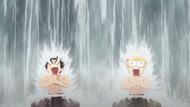
In true shonen fashion, the breathing forms illustrate how inner spirit can be turned into practical strength during combat. Characters in the series unlock new forms and techniques via emotional breakthroughs, meditation, and familiarity with their own nature. This inner conversion trope indicates how mental and spiritual growth directly connect with fighting capability.
10. The Ultimate Evil's Corrupting Influence
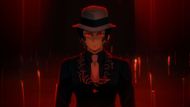
Muzan Kibutsuji flawlessly portrays the ultimate villain archetype, his malevolence shaping the world’s fate and assembling the very struggles that drive the heroes’ journey. His thousand-year dominion of affliction and creation of the demon race places him as the supreme source of anguish that must be vanquished. The sight of this overarching villain in the series gives importance to every fight and feeds a clear end purpose for the series' narrative format.
Demon Slayer prospers by respecting shonen fundamentals while infusing them with visceral emotion and stunning visual artistry. The series illustrates that creation doesn't instruct forsaking tradition—it needs comprehending why these storytelling aspects work and then executing them with unwavering dedication to character authenticity. Via this strategy, familiar becomes extraordinary, and shonen tropes change into timeless narrative gold.
